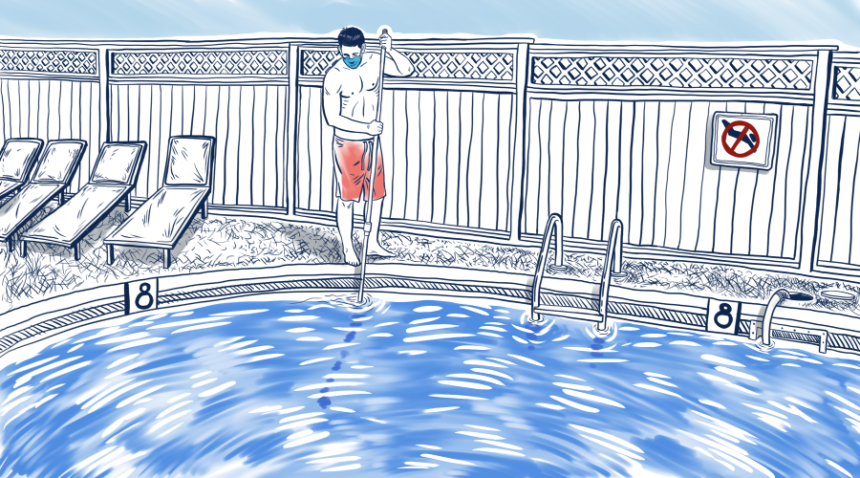No matter where you live, there’s probably a pool near you that has been closed because of the coronavirus disease (COVID-19) pandemic. That pool is likely to reopen soon, if it hasn’t already, and other pools are opening for the summer.
Swimming can be done safely during a pandemic, but it requires more care. Here’s what to know to stay safe from COVID-19.
New Statewide and Local Pool Rules
Physical distancing is important, even in water, and states are acknowledging that with new regulations. For example, the North Carolina Department of Health and Human Services is requiring public pools to limit the number of people allowed to no more than 50 percent of the pool’s maximum occupancy. There can be no more than 10 people in the water per 1,000 square feet, and individual or family units must stay 6 feet apart from one another.
While all public pools in North Carolina must follow those rules, other pools may implement additional rules of their own. The UNC Wellness Centers, which has lap swimming pools at its facilities in Chapel Hill and Cary, decided for the first time to require swimmers to reserve a lane in advance when their pools reopened June 1.
“Within an hour of opening up our reservation system, we had more than 500 reservations,” says Mike Martinho, assistant director of the UNC Wellness Centers. “So clearly there was a lot of pent-up demand, and we’re excited to see our members again.”
Other new measures in place to minimize the risk of virus exposure at the UNC Wellness Centers pools:
- Saunas, spas and locker rooms are closed.
- Towel service and shared pool equipment are not available.
- Seating on the pool deck is spaced out.
- A separate pool entrance and exit is provided.
- Reservation times are staggered for each lap lane to minimize the number of people on the deck at one time.
- Each lane is limited to one swimmer at a time.
- Ten minutes is provided between reservations to allow members to leave the pool deck before the next user comes in.
- One bench per lap-lane user is provided, and alternate lap-lane entry points on each side of the pool are used to maximize physical distancing.
Can You Catch COVID-19 from Pool Water?
One question Martinho has heard many times is whether people can catch COVID-19 from the water in a swimming pool. The answer to that question, according to the Centers for Disease Control and Prevention, is that proper operation and disinfection of a pool will kill the virus that causes COVID-19, and there is no evidence that COVID-19 can spread to people through the water used in pools.
“In the water, any potentially excreted droplets would be extremely diluted and susceptible to all the disinfectants that are used within pools,” says Emily Sickbert-Bennett, PhD, director of UNC Medical Center Infection Prevention. “Coronaviruses are enveloped viruses—microorganisms that are very easy to kill with all our usual methods of disinfection.”
In most pools, chlorine is the primary disinfectant, and it’s important for pool operators to check chlorine levels often. At the UNC Wellness Centers pools, the aquatics staff perform six chlorine checks each day. In addition, the pool water is filtered through an ultraviolet-light sanitation system, Martinho says.
All public pools are inspected and receive inspection scores. The CDC recommends checking that a pool’s inspection results are posted on-site at the pool or contacting your health department.
At the wellness centers, lifeguards keep a log that shows the pH and chlorine readings throughout the day, Martinho says. Pool guests can ask to see it.
Look for pH levels between 7.2 and 7.8. The free chlorine concentration should be at least 1 part per million in pools and at least 3 ppm in hot tubs and spas. If using the chemical bromine as a disinfectant, the free bromine concentration should be at least 3 ppm in pools and 4 ppm in hot tubs and spas.
Read more about the new pool safety measures at the UNC Wellness Centers.

